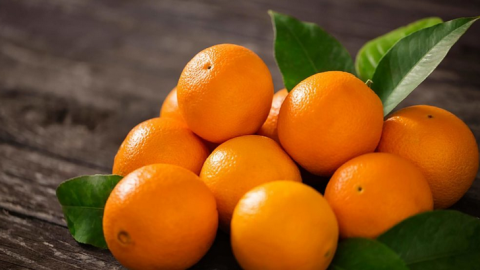
The news is reporting that orange production this year will come in at its lowest levels since 1937. Weather and climate change are blamed for the acute shortage this year as two nasty freezes hit Florida crops this past winter. The bigger issue though is "citrus greening" which is a result of an Asian bug that was introduced to citrus trees at some point in the 1990's. Unfortunately, I can't do anything about the weather or Asian bugs, but it's easy enough to help my clients hedge higher prices for orange juice.
I have read several articles which have covered this developing travesty, but none of them have delved into just how dire the situation really is. Not only is this year's orange crop the lowest-yielding crop since 1937, but the US population is far larger than it was in 1937, two and a half times larger to be exact. Thus, in relative terms, there are less than half as many oranges per person in the US this year than at any time in the last 90 years. Here are the numbers:
Year
1940
1998 (Peak)
2023 Est.
Orange Production
16.0M Boxes
240M Boxes
15.8M Boxes
US Population
132M
281M
330M
Boxes per person1
0.120
0.854
0.048
Orange production in the US peaked in 1998 when the US produced 0.85 boxes of oranges for each US citizen. Tragically, this was also the year that farmers took notice of citrus greening which slowly destroys a tree's ability to produce fruit. Over the past 25 years, citrus greening has become more severe and has devasted many farms. Currently, the US crop is providing just over 5% of the oranges per person as it did in 1998. The situation is, to say the least, quite dire. Both for orange farmers and consumers.
So what can a person do to hedge the increasing costs of oranges? Given that oranges are perishable, the only two options are loading up on frozen orange juice concentrate or simply buying orange juice futures (OJ). I have actually done both going back to the start of this year. However, given that FCOJ takes up valuable freezer space, the OJ contract is the preferred option. The current contract I am holding in my full-size MAP strategy is the Sep '23 expiration which is up 38% YTD. We have not fully participated in those gains but I can promise you the gains in our OJ exposure far exceeds the additional cost of my clients' orange juice consumption.
An investor must be very careful buying orange juice contracts as they are relatively large and can lack liquidity. The Sept '23 contract is currently trading just north of $40,000. Futures are leveraged so the deposit to invest in an OJ contract will be a fraction of this figure but I choose to only invest my clients' assets according to the notional value of the contract.
OJ contracts that are nearing expiration are typically fairly liquid, especially for someone just buying a contract or two. The contract we hold is currently quoting a bid/ask spread of just under 30 bps, which isn't ideal but is reasonable assuming we hold the contract for a decent span of time. But contracts with expirations in excess of 6 months can trade very thinly. For example, the Sep '25 and Nov '25 contracts aren't even showing a bid/ask price on my quote system, nor do I see any transactions on my charting software. Clearly, these contracts are very illiquid and would require diligence in buying plus a willingness to absorb substantial losses if you wanted to sell it before it became a near-month contract. This is disappointing because there is a significant level of backwardation in the quoted prices but I value liquidity too much to venture into illiquid contracts.
The remaining question is, is it too late to build a position in OJ? Is a 38% move in just over six months sufficient to reduce the demand for oranges? As Jim Rogers is fond of saying, "high prices are the cure for high prices." Eventually, higher prices will lead to demand destruction and people will simply quit consuming oranges and prices will stabilize. Is OJ at that point? Given that I don't have a crystal ball, I can't say. If we examine oil in 2008, wheat in 2022, as well as other notable commodity spikes, 38% does not seem excessive. If there is a true shortage situation, then it's conceivable for prices to go much, much higher. In the 18 months starting in January of 2007, oil prices went up 180% and there wasn't even a shortage, just a rumor of a shortage. Last year, wheat prices appreciated over 75% in just two months as it was rumored the War in Ukraine may lead to shortages. I can say I'm still holding a position in OJ in my full-sized MAP strategy but this position is subject to be closed if my trading methodology dictates it.
Again, I don't have a crystal ball so I can't say with any degree of certainty whether our nation will run out of oranges this year or even next year. I do know that a new orange tree takes at least three years to bear fruit and that citrus greening is only getting worse. So the supply-side issue will not be resolved anytime in the next few years. I hate the prospect of higher orange prices but the only thing I can do about it is help my clients hedge it.
